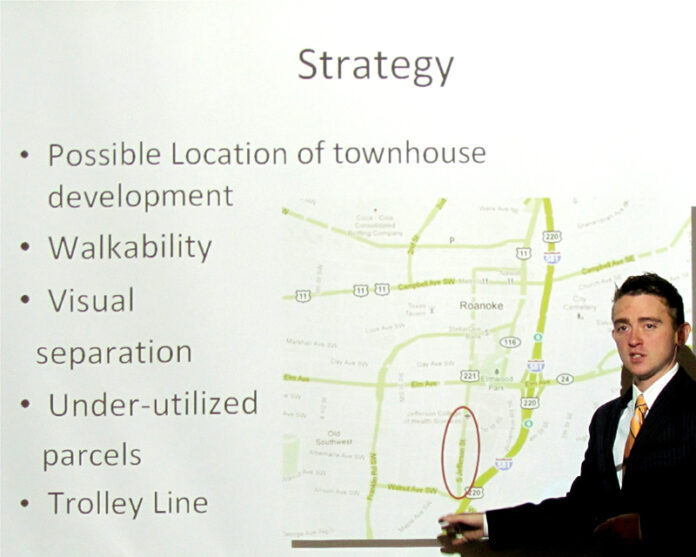
Now that property eligible for state tax credits has dried up, Ed Walker has ended his downtown development efforts and the pipeline of new housing stock is shrinking. It will now be an effort to fill the demand and sustain the supply.
The Economic Development Authority helped fund a downtown housing market study in conjunction with Downtown Roanoke Inc. DRI CEO Sean Luther presented the results to Roanoke City council members on Monday.
A survey was sent to over 400 downtown residents with 19.5% of them responding. Over 32% of those were 20-29 years of age. The smallest age group 70-79 comprised 2.7% of the respondents. The average age was 41, Caucasian and 60% male.
Over 80% had college degrees with average income of $65,000. Most who chose to move downtown came from outside the city limits but still within the Roanoke Region – 17.8% moved to Roanoke from out-of-state.
More condominiums and townhouses are needed according to respondents with Elmwood Park being the most coveted amenity followed closely by the greenway and the Taubman Museum. Downtown residents wanted a convenient grocery and drug store.
Negatives cited by the residents were loiterers especially around the bus station. The extra charge for parking drew a few comments. Luther said that only 56% of downtown residents occupied city-owned spaces. “Some residents don’t own cars,” said assistant manager Brian Townsend.
All respondents cited the urban lifestyle and trolley as an incentive for living downtown. They wanted to see more trolley routes. To add one trolley would cost $500,000 said Luther. Council member Ray Ferris thought charging for the trolley might help but Luther pointed out that Carilion was paying most of the operating cost. People would be less likely to use it if they needed a pass or change thought Luther.
Connecting Old Southwest however might give an opportunity to institute a charge outside of the normal service district.
“The condominium pipeline is almost empty,” said Luther. Apartment leases are at 100% and are occupied by a younger demographic.
“The Commonwealth Historic Tax Credit program almost singularly is responsible for making these [building] deals work,” said Luther. He warned that the city is getting to the point where it has exhausted the supply of eligible buildings. Apartments could use the Federal Historic tax credits because they were income producing projects explained Townsend. Owned condominiums and single housing structures can only use state historic tax credits.
The tax credits have made downtown growth possible. There is no local incentive that can replace a 45% historic tax credit said Townsend.
Strategically identifying opportunities to infill “is going to become very important if we’re going to continue this push,” said Luther. Currently downtown is “hugely skewed toward apartments.”
Affordable townhouses are needed. Existing stock is “extremely high end at $600,000 and up,” he said. Luther identified the South Jefferson corridor as a good location for attached connected single family housing. Luther called it a “step down transition planning area” to Old Southwest.
There is a dwindling supply of new apartment units coming online. He said that was needed it to increase the developer recruitment strategy.
Luther concluded that single family attached housing products would open up new markets for downtown living. “Not everyone wants to live in a multi-unit structure,” he said.
Large buildings eligible for historic tax credits are tapped out. City manager Chris Morrill said, “our biggest challenge is surface lots. When you look at downtown, 30% plus is surface parking lots. That’s where the opportunities are.”
“You have no idea anyone is living downtown,” said Luther. As in single family residents there are no awnings or window boxes or signs of residential living. Shiny glass is how people think of downtown living now he said. Left and South of the Market building there are opportunities to integrate new architecture of the more single-family residential types.
Morrill said that a connection between the Virginia Tech – Carilion Medical Campus to downtown is where transitional housing can fill the gap.

